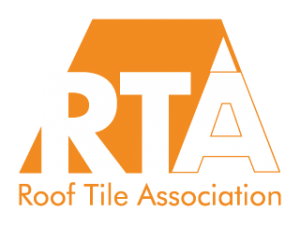 With one of the harshest climates in Europe, building materials used in the UK must be durable and weathertight. Roof Tile Association (RTA) members keep these climatic challenges at the forefront of their minds.
With one of the harshest climates in Europe, building materials used in the UK must be durable and weathertight. Roof Tile Association (RTA) members keep these climatic challenges at the forefront of their minds.
All RTA concrete roof tiles and fittings are manufactured in accordance with BS EN 490, the European Standard for concrete roof tiles and fittings. It sets out criteria for the manufacturing process and BS EN 491 provides the required test methods. Similarly, RTA clay tiles and fittings are manufactured in accordance with BS EN 1304, the European manufacturing Standard, with BS EN 1024, BS EN 539-1, BS EN 539-2 and BS EN 538 providing the test methods.
Product Standards are generally performance-based rather than being prescriptive, to allow for innovation of products and materials. BS EN 490 and BS EN 1304 do not specify a concrete mix or clay material respectively. Instead, they specify the minimum strength tiles must achieve after curing for 28 days for concrete tiles or after firing for clay tiles.
Concrete and clay tiles are subjected to water impermeability testing. Sample tiles must hold a head of water on their top surface for 20 hours without any drips falling from the underside of the tile.
They must also comply with various dimensional, regularity of shape and mass tolerances to demonstrate consistency in manufacture, enabling installation in accordance with the manufacturer’s published data, and weathertightness.
With regards to fire resistance, BS EN 490 and BS EN 1304 set out requirements for external fire resistance and reaction to fire. In both cases, RTA members’ concrete and clay tiles and fittings are deemed to satisfy the requirements without the need for testing.
To demonstrate the frost resistance of clay tiles, there are three levels of freeze/thaw cycles outlined in the Standard – Level 1: minimum 150 cycles, Level 2: minimum 90 cycles and Level 3: minimum 30 cycles. For use in the UK clay tiles must achieve Level 1, though RTA members regularly test their tiles well beyond 150 frost cycles.
The Standard Code of practice for slating and tiling, BS 5534 covers roof design, rather than being a product Standard. However, RTA members design and manufacture their products to be installed fully in compliance with BS 5534, ensuring the completed roof will perform properly and remain weathertight and durable. For example, it provides criteria and methodology to calculate the required wind load resistance of roof tiles and fittings. RTA members supply fixings and systems so their products can be installed to resist the calculated wind loads.
A European test method, PD CEN/TR 15601: 2012, determines the wind driven rain resistance of roof tiles, and RTA members use this to establish the rain resistance and set the minimum recommended roof pitches of their roof tiles.
RTA members also produce their dry fixed systems to fully comply with BS 8612: the British Standard for dry fixed ridge, hip and verge systems. This means ridge, hip and dry verge systems are durable and weathertight and will resist wind loads forecast to be exceeded only once in any 50-year period.
To ensure consistent quality of all their products and systems, RTA members fully comply with the factory production quality control sampling and testing requirements of BS EN 490 for concrete tiles and BS EN 1304 for clay tiles, and have third-party accreditation for compliance with Quality Management Systems Standard ISO 9001.
In addition, products manufactured to a European Harmonised Standard are CE marked and a Declaration of Performance (DoP) is available for each product. In summary, by choosing products from RTA members, you can be sure that the roof tiles and all associated fittings and systems will provide an attractive, long-lasting and weather-tight roof.
